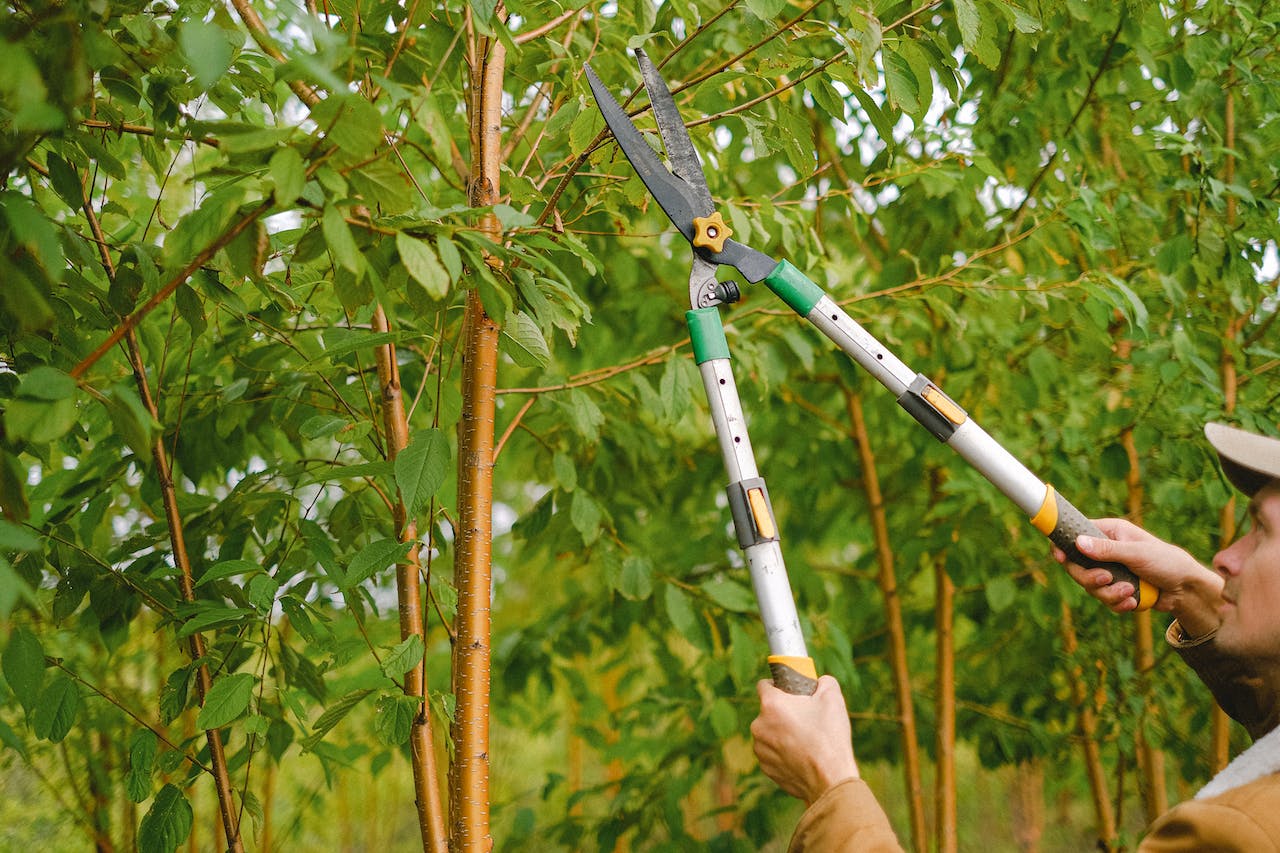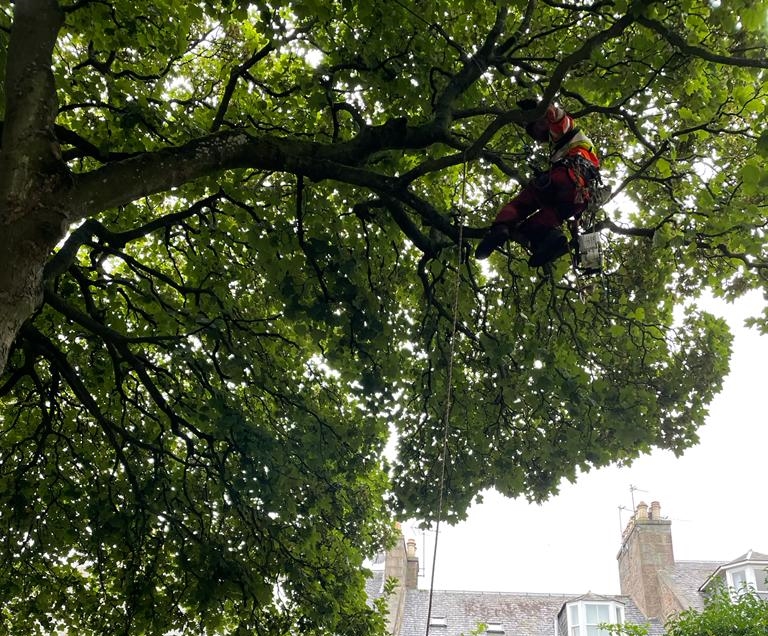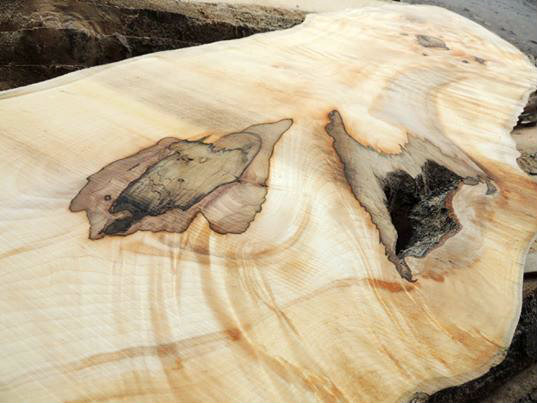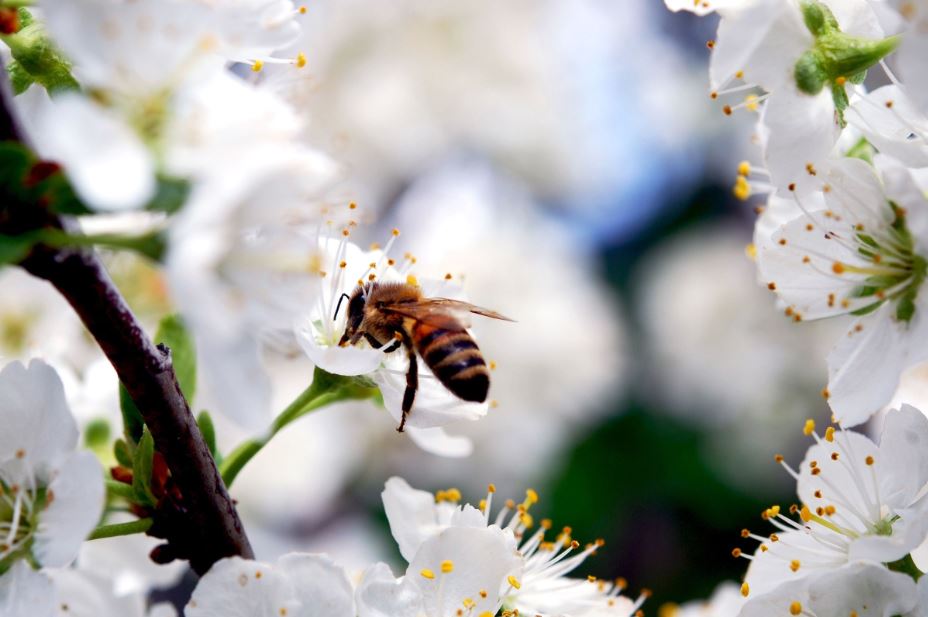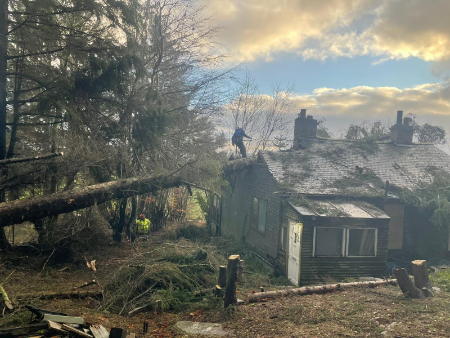How Do Tree Surgeons Climb Trees?
February 21, 2024
Of all the questions we’re asked on a regular basis, this is one of the most frequently encountered: “How do tree surgeons climb trees?” Some people assume that we use mechanical aids such as cherry pickers to ascend all types of trees whilst others imagine us shimmying up trunks and across the thick branches of larger specimens, much like schoolchildren on summer break. The truth is somewhere between these two extremes: although we may sometimes climb like we did as children, without any aids or protective equipment, and sometimes make use of cherry pickers to reach high points, we most often adopt a more middle-of-the-road approach, as we explain in today’s blog post.
So, How Do Tree Surgeons Climb Trees?
Whilst you won’t often see tree surgeons hitching a lift to the top of a tree on a cherry picker, you will see them using a lot of gear that looks like it would be equally at home in a mountaineer’s backpack. Using rope in much the same way that it’s used in rock climbing, we are able to ascend mature trees in relative safety, following one of two primary climbing techniques:
- Moving Rope System (MRS) – An MRS utilises an adjustable loop of rope that enables tree surgeons to ascend and descend trees with relative ease. The main advantage of using an MRS is that you only have to lift half your body weight when climbing. However, for every metre you ascend, you will need to move 2 metres of rope with an MRS. Half the weight but twice the rope is an easy way to remember how an MRS works in practice. Many professionals may refer to this approach as double rope technique (DRT) rather than MRT but they are talking about exactly the same thing when they do.
- Stationary Rope System (SRS) – Also known as single rope technique (SRT), this method employs a single, stationary rope, as you have probably already surmised. Instead of being attached to the climbing harness as it would be with an MRS, the terminal end of the climbing rope is attached to the tree being climbed, either at the base (basal anchor) or the top (canopy anchor). If a basal anchor is employed, the rope must also be run through a crotch in the tree. When climbing with an SRS, the rope remains stationary while you move along it. Ascents are faster, owing to the fact you don’t need to move along 2 metres of rope for every metre of ascent (as would be the case when using an MRS). However, you do need to haul your full body weight with an SRS, which makes it a more physically taxing approach: a factor you will probably want to take into consideration when planning longer jobs that involve plenty of climbing.
Whichever system is preferred, qualified tree surgeons will always assemble the required equipment carefully and inspect every component before use. When your continued good health depends on a system, selecting and inspecting every component are tasks that should never be rushed or, worse still, skipped altogether.
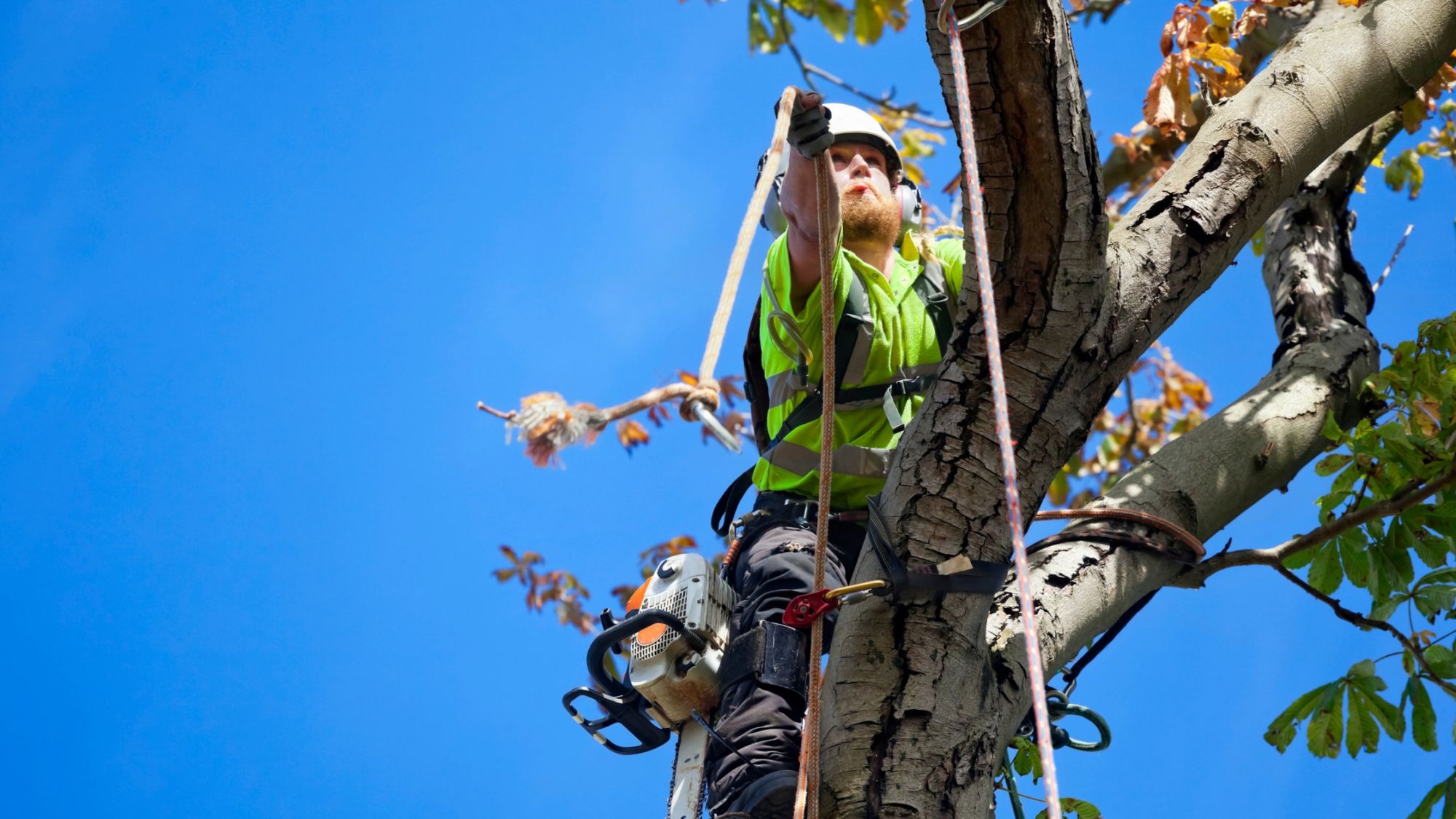
How Do Tree Surgeons Climb Trees in Bad Weather?
This is a bit of a trick question because in really bad weather, the answer is: we don’t! In very light showers or moderate winds, many tree surgeons will continue to perform all of their regular duties but when conditions become perilously windy or wet, all responsible professionals will stay with their feet firmly planted on the ground.
For more information about the climbing techniques we employ and the qualifications we hold that make us better climbers, please feel free to contact us.
Telephone Number
Location
Craigenseat Farm, Crossroads, Keith, AB55 6LQ, United Kingdom
More from Epic Tree Care
Check our library of articles regularly, as we’re constantly growing our knowledgebase.







